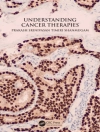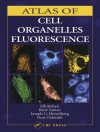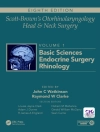Neurointerventional Techniques: Tricks of the Trade is a practical reference that includes core procedures used in the growing neurointerventional subspecialty. The step-by-step, concise presentation of procedures along with original line drawings and high-quality images concisely distill a wealth of information, making it easy for both novice and expert neurointerventionists to review how procedures are performed. The book includes over 50 specific procedures as well as important chapters on access points, physiological testing, and pharmacology in the endovascular suite.
Key Features:
- Written by leading experts in neurointerventional practice
- Strong emphasis on complication avoidance throughout the text
- Covers both basic and more complex neuroendovascular procedures
- Appendices are rich with information on catheters, presented in an easy-to-access tabular format, as well as important guidance on intraoperative neurophysiologic monitoring as it applies to neurointerventional procedures
Neurosurgeons and neurointerventionists at all levels, from residents learning procedures to experienced practitioners needing a quick refresher, will find this book to be an invaluable resource that they will consult frequently in clinical practice.
Inhaltsverzeichnis
Part 1: Access
Chapter 1: A New Tool in the Arsenal of the Neurosurgeon: The Checklist
Chapter 2: Sheaths, Catheters, and ‚Tower of Power‘
Chapter 3: Femoral Artery Access
Chapter 4: Brachial and Radial Artery Access
Chapter 5: Direct Access Techniques for Endovascular Procedures
Chapter 6: Management of Femoral Access Complications
Chapter 7: Arch Navigation
Chapter 8: Navigation of the Complex Arch
Chapter 9: Vascular Closure Devices
Part 2: Aneurysms
Chapter 10: General Techniques of Coil Embolization (Coil Properties, Shapes, Coil Sizing, etc.)
Chapter 11: Stretched Coils
Chapter 12: Managing Coil Migration
Chapter 13: Management of the Prolapsed Coil Tail
Chapter 14: Management of Intraoperative Rupture
Chapter 15: Thromboembolic Complications While Coiling
Chapter 16: Transcirculation Approaches
Chapter 17: Two-Catheter Technique for Coil Embolization
Chapter 18: Single-Lumen Balloon-Assisted Coil Embolization
Chapter 19: Double-Lumen Balloon-Assisted Coil Embolization (Ascent Balloon)
Chapter 20: Stent-Assisted Coiling of Cerebral Aneurysms
Chapter 21: Flow Diverter Treatment for Aneurysms: The Pipeline Embolization Device
Chapter 22: Onyx HD-500 Embolization
Chapter 23: Treatment of Recurrent Aneurysms: Decision Paradigm
Chapter 24: ‚Going over the Dome‘: Intra-Aneurysmal Catheter Navigation for Stent-Assisted Coil Embolization of Wide-Neck Aneurysms
Part 3: Management of Vasospasm
Chapter 25: Pharmacological Angioplasty
Chapter 26: Balloon Angioplasty
Part 4: Embolization of Epistaxis Arteriovenous
Chapter 27: Management of Epistaxis: Emphasis on the Role of Endovascular Therapy
Chapter 28: Onyx Embolization
Chapter 29: Proximal and Distal (Combined Catheter) Techniques During Onyx Embolization
Chapter 30: Embolization with NBCA Glue
Chapter 31: The 5% Dextrose Push Technique for Use with NBCA Glue
Chapter 32: Carotic-Cavernous Fistulas: Transarterial and Transvenous Approaches
Chapter 33: The Superior Ophthalmic Vein Approach for Carotid-Cavernous Fistulas
Chapter 34: Direct Access for Dural Arteriovenous Fistulas
Chapter 35: Dural Arteriovenous Fistula: Arterial Embolization
Chapter 36: Dural Arteriovenous Fistula: Venous Embolization
Chapter 37: Endovascular Treatment of Spinal Dural/Epidural Fistulas with a Liquid Embolic Agent
Chapter 38: Intra-Arterial Chemotherapy for Retinoblastoma
Chapter 39: Direct Puncture Tumor Embolization
Part 5: Extracranial Vascular Disease
Chapter 40: Stent Design Choice Based on Anatomy
Chapter 41: Proximal Carotid Stenosis
Chapter 42: Filter Aspiration
Chapter 43: Endovascular Treatment of Chronic Carotid Occlusion
Chapter 44: Cervical Carotid Pseudoaneurysms
Chapter 45: Case for Stenting with Dissection
Chapter 46: Vertebral Artery Origin Stenting
Chapter 47: Subclavian Stent /Innominate Stenosis for Subclavian Steal
Chapter 48: Carotid Blowout
Chapter 49: Arterial Deconstruction
Part 6: Vertebral Augmentation
Chapter 50: Vertebroplasty
Chapter 51: Kyphoplasty
Part 7: Endovascular Procedures within the Venous System
Chapter 52: Measuring Central Venous Pressure and Pseudotumor Cerebri
Chapter 53: Stenting for Pseudotumor Cerebri
Chapter 54: Local Thrombolysis for Cerebral Thrombosis
Chapter 55: Use of Angiojet for Dural Sinus Thrombosis
Part 8: Stroke and Intracranial Stents
Chapter 56: Penumbra Aspiration System
Chapter 57: Stents and Stent Retrievers for Acute Stroke Intervention
Chapter 58: Balloon Angioplasty for Intracranial Atherosclerotic Disease
Chapter 59: Self-Expandable Stents (Intracranial Atherosclerotic Disease)
Chapter 60: Acute Carotid Occlusion
Part 9: Physiological Testing
Chapter 61: Provocative Tests Spinal (Spinal WADA)
Chapter 62: Provocative Cerebral Testing (WADA Test)
Chapter 63: Balloon Test Occlusion
Chapter 64: Inferior Petrosal Sinus Sampling
Part 10: Pharmacology in the Interventional Suite
Chapter 65: Pharmacology in the Endovascular Suite: Dosages, Antidotes, Point-of-Care Testing 300
Appendices
I. Specifications and Compatibility of Guiding Catheters, Microcatheters, Guidewires, Balloons, Stents, and Coils
II. Neursphysiologic Monitoring
Suggested Readings












